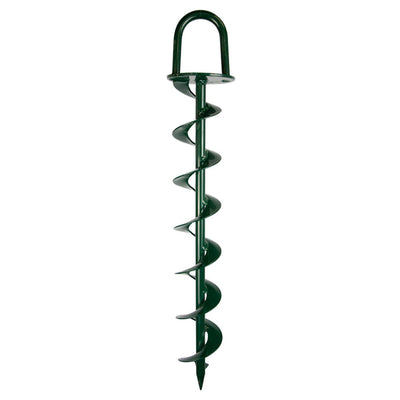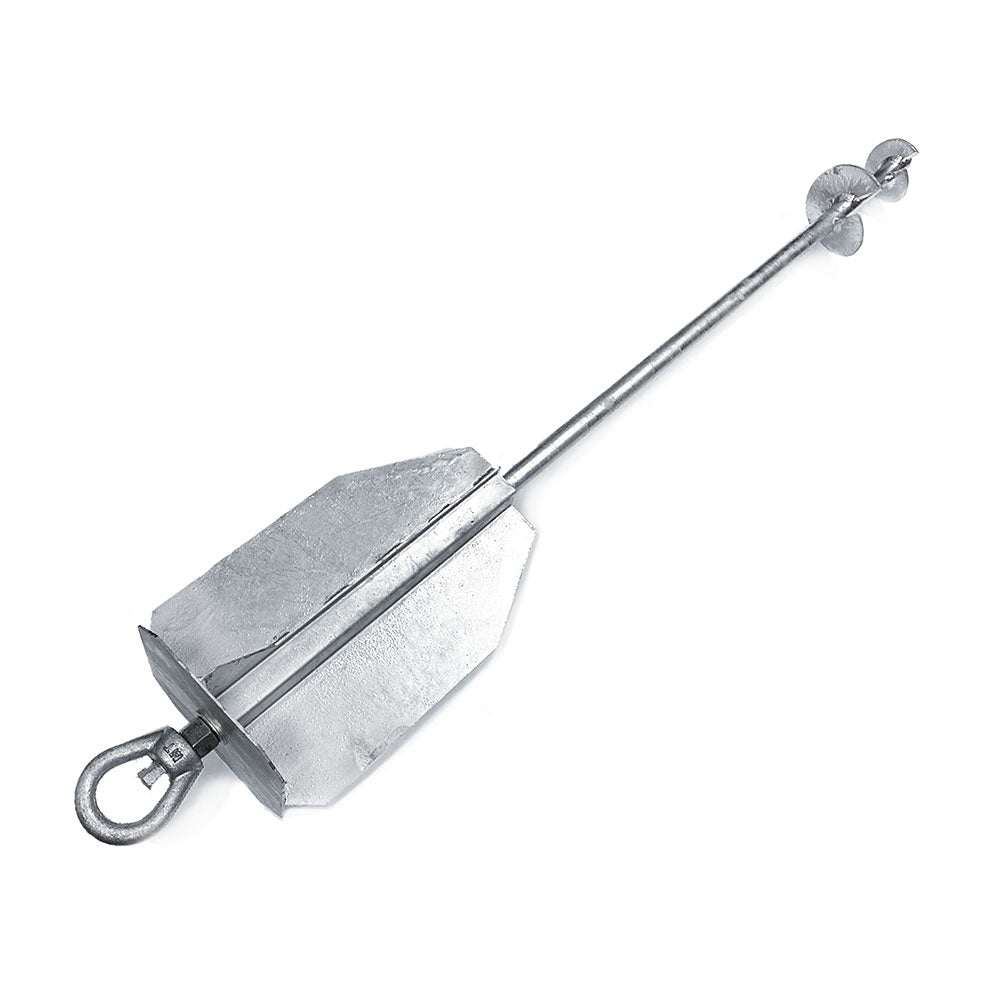An Easy-to-Follow List for Installing and Using a Ground Anchor
An Easy-to-Follow List for Installing and Using a Ground Anchor
Blog Article
Discover the Various Kinds Of Ground Support for Your Following Task
From auger anchors, which stand out in varied soil problems, to stake anchors created for temporary setups, the alternatives are various. Additionally, concrete and screw supports existing unique advantages in certain scenarios, while deadman supports are tailored for applications needing resistance to lateral pressures.

Auger Anchors
Auger supports are a prominent choice in various construction and landscaping tasks as a result of their one-of-a-kind layout and effective securing abilities. These supports include a helical screw-like shaft that is driven right into the ground, permitting for a stable and safe and secure hold. The spiral design assists in easy installation and maximizes resistance against side forces, making auger supports specifically reliable in applications such as fencing, short-term frameworks, and erosion control.
The installation procedure of auger anchors is relatively simple. They can be manually or mechanically mounted, depending upon the dimension and called for deepness. This adaptability permits their use in diverse soil conditions, from sandy to clayey terrains. In addition, auger anchors can be easily eliminated and reused, which includes in their cost-effectiveness and sustainability.
Among the substantial benefits of auger anchors is their capacity to distribute tons evenly across the bordering soil, minimizing the threat of soil disruption and reducing environmental impact. Furthermore, they are less at risk to loosening up or heaving gradually contrasted to traditional securing methods. Subsequently, auger supports are a superb option for jobs needing reputable and sturdy anchoring solutions.

Risk Anchors
When it concerns protecting structures in a selection of outdoor applications, stake anchors use a simple and dependable remedy. These anchors are normally built from long lasting products such as steel or aluminum, made to endure environmental anxieties while offering optimal security. Their straightforward design enables fast setup, making them an ideal selection for short-term or long-term anchoring needs.
Stake supports are specifically valuable in protecting camping tents, canopies, and various other light-weight structures against wind and weather. They function by being driven right into the ground at an angle, producing a strong hold that stands up to pull-out forces - Ground Anchor. The efficiency of stake supports relies on numerous variables, including dirt type, dampness web content, and the angle of installation
For added protection, lots of stake anchors come with accessory factors for straps or ropes, permitting stress adjustments as needed. In applications such as landscaping or construction, they can effectively support equipment or structures on uneven surface. In general, risk supports offer a cost-effective and versatile remedy for safeguarding different exterior installations, making them a favored selection for contractors and DIY lovers alike.
Concrete Anchors
Concrete supports supply a durable option for protecting structures to concrete surfaces, ensuring stability and safety in different applications. These supports are crucial for jobs varying from domestic buildings to large industrial installments. They come in different types, consisting of development anchors, adhesive supports, and undercut supports, each developed for particular load requirements and environmental conditions.
When installed,Development supports depend on mechanical devices to grip the concrete. They are perfect for medium to sturdy applications. Sticky anchors make use of high-strength epoxy or material to bond the anchor to the concrete, using superior load-bearing capabilities, specifically in fractured concrete scenarios. Undercut anchors develop an unique shape within the concrete, offering remarkable holding power, especially in applications where tensile loads prevail.
When executed appropriately, concrete supports dramatically improve the architectural stability of different projects, making Recommended Reading them important in modern building Full Report and construction techniques. Recognizing the details demands of your project will certainly help in choosing the best type of concrete support for the job.
Screw Anchors

Screw anchors are a functional securing solution that can be properly utilized in a range of applications where typical concrete supports might not be sufficient. These supports include a helical layout that enables them to be quickly driven right into the ground, making them ideal for use in soil and various other substratums. Their special framework provides excellent holding power and resistance to pull-out forces, making them ideal for numerous tasks, from landscape design to structural support.
Among the key benefits of screw supports is their convenience of setup. They need minimal devices and can usually be set up without the need for excavation, which saves both time and labor expenses. Furthermore, screw anchors can be gotten rid of and recycled, offering a lasting option for momentary applications.
Screw anchors are specifically helpful in areas where soil problems are testing, such as loose or sandy dirts. Their ability to be installed at differing midsts allows for modification based upon certain project needs. Generally, screw supports offer a trusted and efficient securing technique, making them a superb choice for professionals and engineers looking for effective remedies for their projects.
Deadman Anchors
Deadman anchors work as a durable solution for stabilizing frameworks in challenging conditions, particularly where traditional securing methods might drop short. These supports include large, hefty things buried underground, which produce resistance versus lateral pressures. The layout normally involves a horizontal component, such as a block of concrete or a steel plate, hidden in the dirt, to which bands or cables are affixed.
The efficiency of deadman anchors lies in their ability to distribute tons over a larger location, minimizing the risk of failing in unstable dirt conditions. They are especially helpful in applications such as retaining walls, momentary structures, and incline stablizing, where soil motion can endanger the honesty of the structure.
Setup of deadman supports requires careful preparation to ensure they are placed at the proper deepness and orientation, optimizing their load-bearing capability. While they may call for even more labor and product than light-weight anchors, their reliability in negative conditions makes them very useful for long-term projects. Furthermore, deadman anchors are flexible and can be adapted to numerous applications, making them a best choice for engineers facing distinct obstacles in their projects.
Final Thought
Auger anchors stand out in varied soil problems, while stake anchors suit momentary applications. For concrete surface areas, expansion and adhesive supports give trustworthy options, and screw supports provide flexibility in tough terrains.
In addition, concrete and screw anchors present unique advantages in specific circumstances, while deadman anchors are tailored for applications needing resistance to side pressures - Ground Anchor.Auger anchors are a visit this web-site preferred choice in different building and landscaping projects due to their one-of-a-kind layout and efficient securing capacities. They come in various types, consisting of expansion anchors, adhesive supports, and undercut supports, each developed for details lots demands and ecological conditions
Sticky anchors utilize high-strength epoxy or resin to bond the anchor to the concrete, offering superior load-bearing abilities, specifically in cracked concrete situations. In general, screw supports provide a dependable and efficient anchoring method, making them an excellent option for engineers and contractors looking for efficient services for their projects.
Report this page